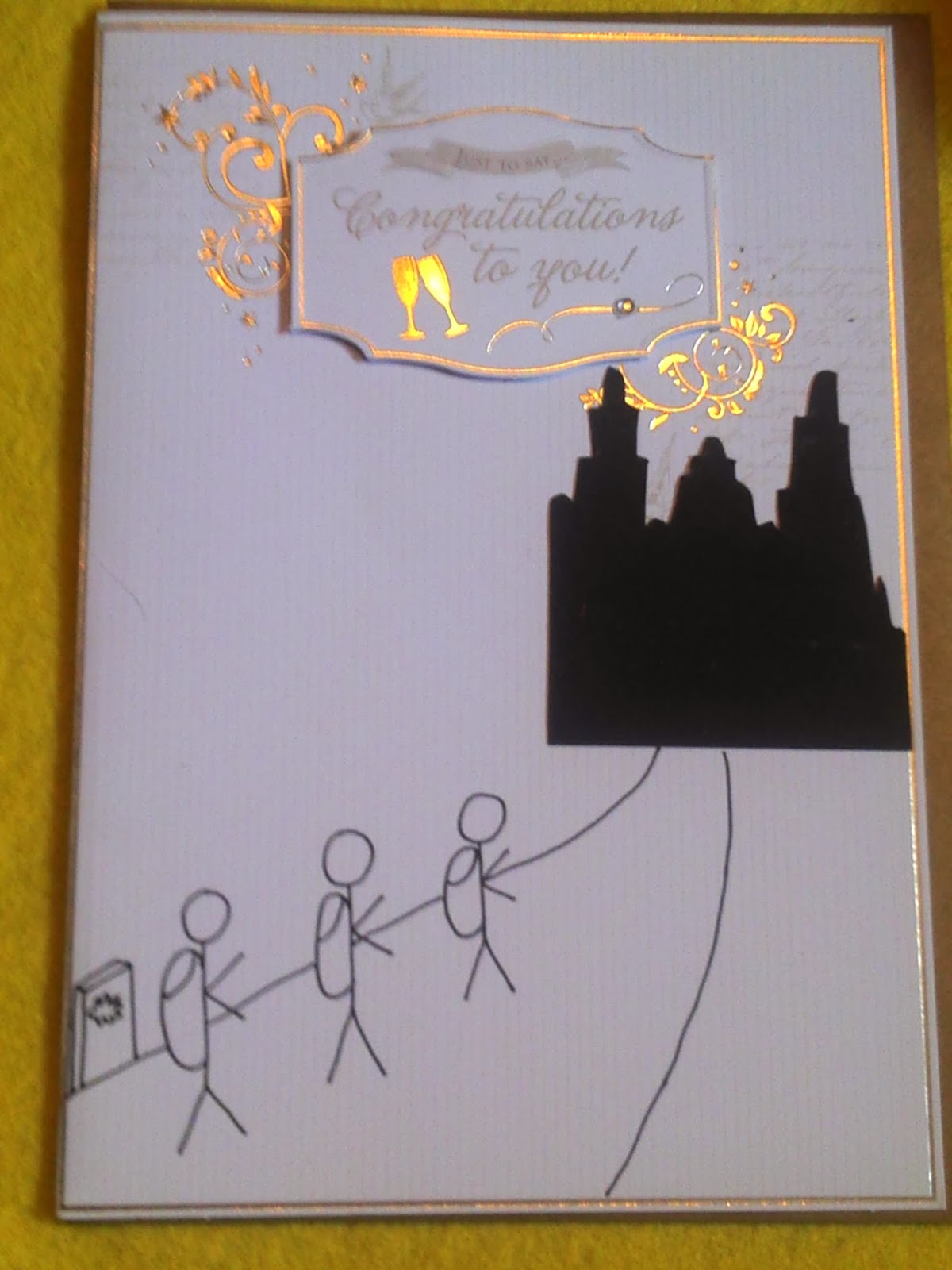It seems to have become a bit of a tradition for us that I give Dad and Becky a 'Congratulations' card the night before we get to Santiago, I've always just bought these before but wanted to do something a bit different this year and so decided to alter cards to make them more Camino-y.
Then I sewed on a black 'loop' to be the string that bunting hangs on
And stuck on my felt triangles to be bunting! Nice and easy but looks good
This is the first card - fairly plain ready to be decorated with a nice big space at the bottom
I drew the outline of Santiago Cathedral and then cut it out and turned it over so that my pencil lines could not be seen
Then I stuck it on and drew my design of three Pilgrims walking on with pencil
Then I went over it in pen and, when the pen was dry, rubbed out my pencil lines
My other card has different versions of 'Congratulations' on it. I started by cutting out small triangles in blue and yellow
Then I sewed on a black 'loop' to be the string that bunting hangs on
And stuck on my felt triangles to be bunting! Nice and easy but looks good









Comments
Post a Comment